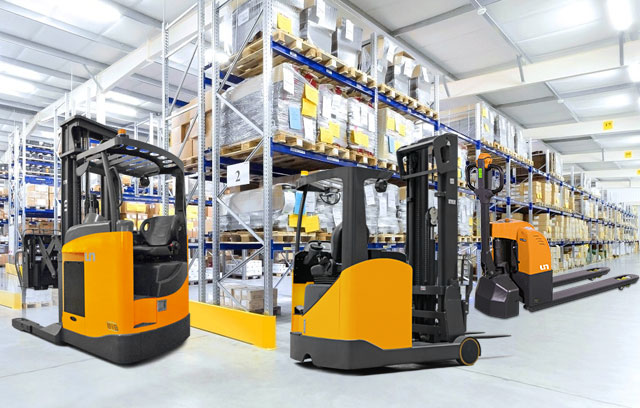Proper maintenance and servicing are essential for ensuring optimal performance and longevity of a forklift truck. Here are some key steps to maintain and service a forklift truck:
Perform regular inspections: Conduct daily or pre-shift inspections of the forklift truck to check for any signs of wear, damage, or malfunction. Pay attention to components such as tires, brakes, lights, hydraulic system, and safety features.
Keep it clean: Regularly clean the forklift truck, including the exterior surfaces, engine compartment, and hydraulic components, to remove dirt, debris, and corrosive substances that can contribute to premature wear and deterioration.
Check fluid levels: Monitor fluid levels regularly, including engine oil, hydraulic fluid, coolant, and brake fluid. Top up fluids as needed and replace them according to the manufacturer's recommendations.
Inspect tires: Check the condition and inflation of tires regularly. Replace worn or damaged tires and ensure proper tire pressure to maintain traction, stability, and maneuverability.
Lubricate moving parts: Apply lubricants to moving parts such as chains, bearings, pivot points, and mast rollers to reduce friction and wear. Follow lubrication intervals specified by the manufacturer.
Inspect brakes: Regularly inspect brake components, including pads, discs, drums, and hydraulic system, for signs of wear or damage. Adjust or replace brake components as needed to ensure safe and efficient braking.
Inspect electrical system: Check the battery, cables, connectors, and electrical components regularly for signs of corrosion, loose connections, or damage. Clean terminals and connections and replace worn or damaged components as needed.
Inspect steering system: Check the steering mechanism, including the steering wheel, linkage, and steering cylinder, for proper operation and alignment. Adjust or replace components as needed to maintain steering responsiveness and accuracy.
Test safety features: Verify the operation of safety features such as seat belts, horns, lights, backup alarms, and emergency stop switches regularly. Repair or replace malfunctioning safety features promptly to ensure operator safety.
Monitor engine performance: Keep track of engine performance indicators such as fuel consumption, exhaust emissions, and engine temperature. Address any abnormal readings or symptoms promptly to prevent potential engine damage or failures.
By following these maintenance and servicing practices, forklift truck owners and operators can help ensure optimal performance, reliability, and longevity of their equipment, while also promoting a safe and efficient work environment. Regular maintenance and servicing can also help identify potential issues early on, preventing costly repairs and downtime in the future.











 中文简体
中文简体 عربى
عربى Español
Español














